WORDS: ADAM LANDAU | PHOTOS: ALEX PRINS
LIMA – or, to use its full, ungainly title, the Langkawi International Maritime and Aerospace Exhibition – must surely be a bucket-list event for any aviation enthusiast. The holy trifecta of epic photography opportunities, rare aircraft and high-quality flying displays is hard to match anywhere else in the world. Stretch this action out for a full ten days and place it on an idyllic tropical island, and the resulting package is thoroughly irresistible.
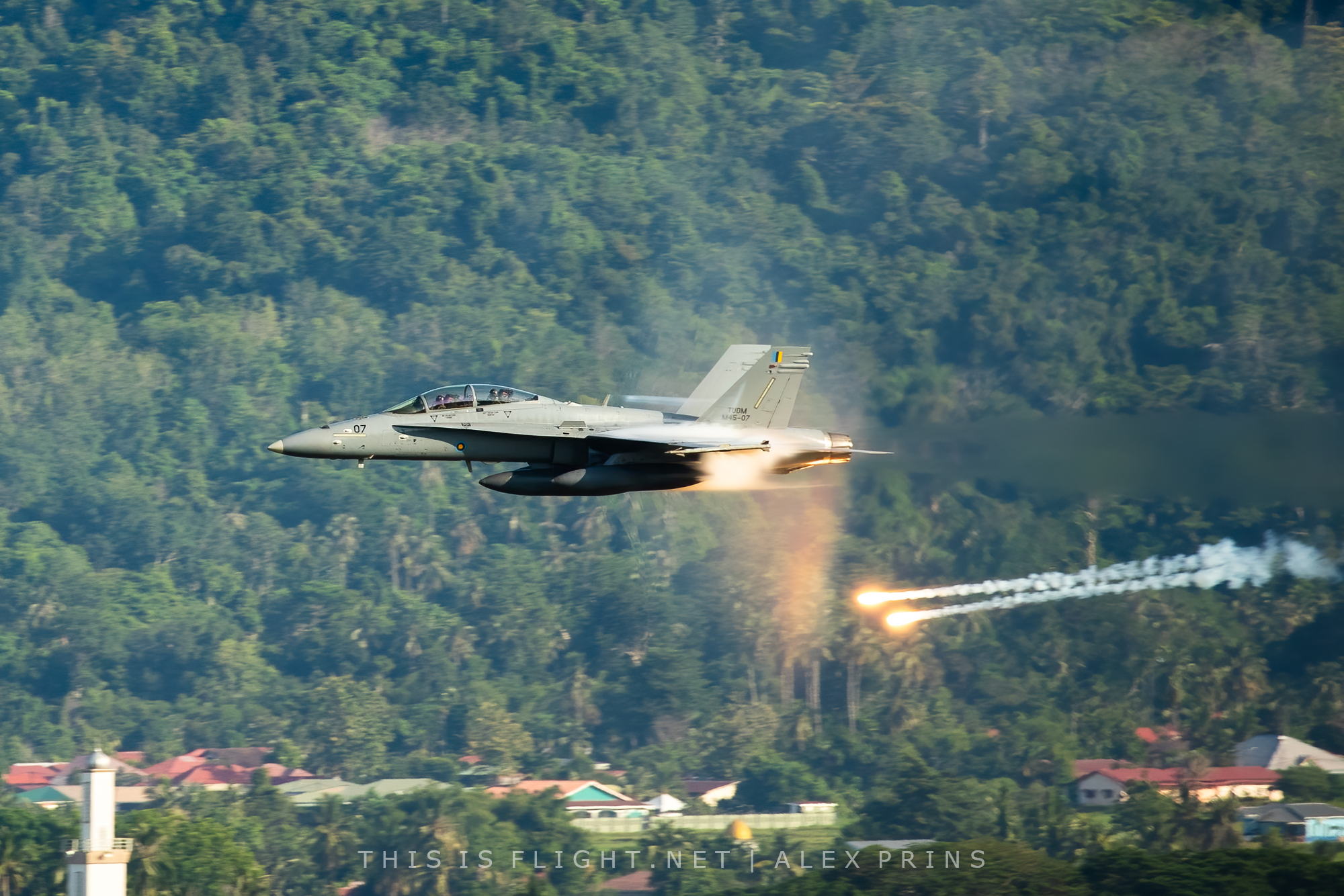
But attending LIMA requires something of a unique mindset, because for every single thing that makes it great, there is something else that makes it utterly infuriating. There’s the intense competition for space at some of the off-site viewing spots, the dress code requiring long trousers despite the intense heat, and, worst of all, there is the lack of information about participating aircraft, display timings, parking arrangements, and indeed, just about everything else that spectators really want or need to know. In this vacuum, rumours and misinformation spread like wildfire. Keeping up with it is a full-time job – and an emotionally draining one.
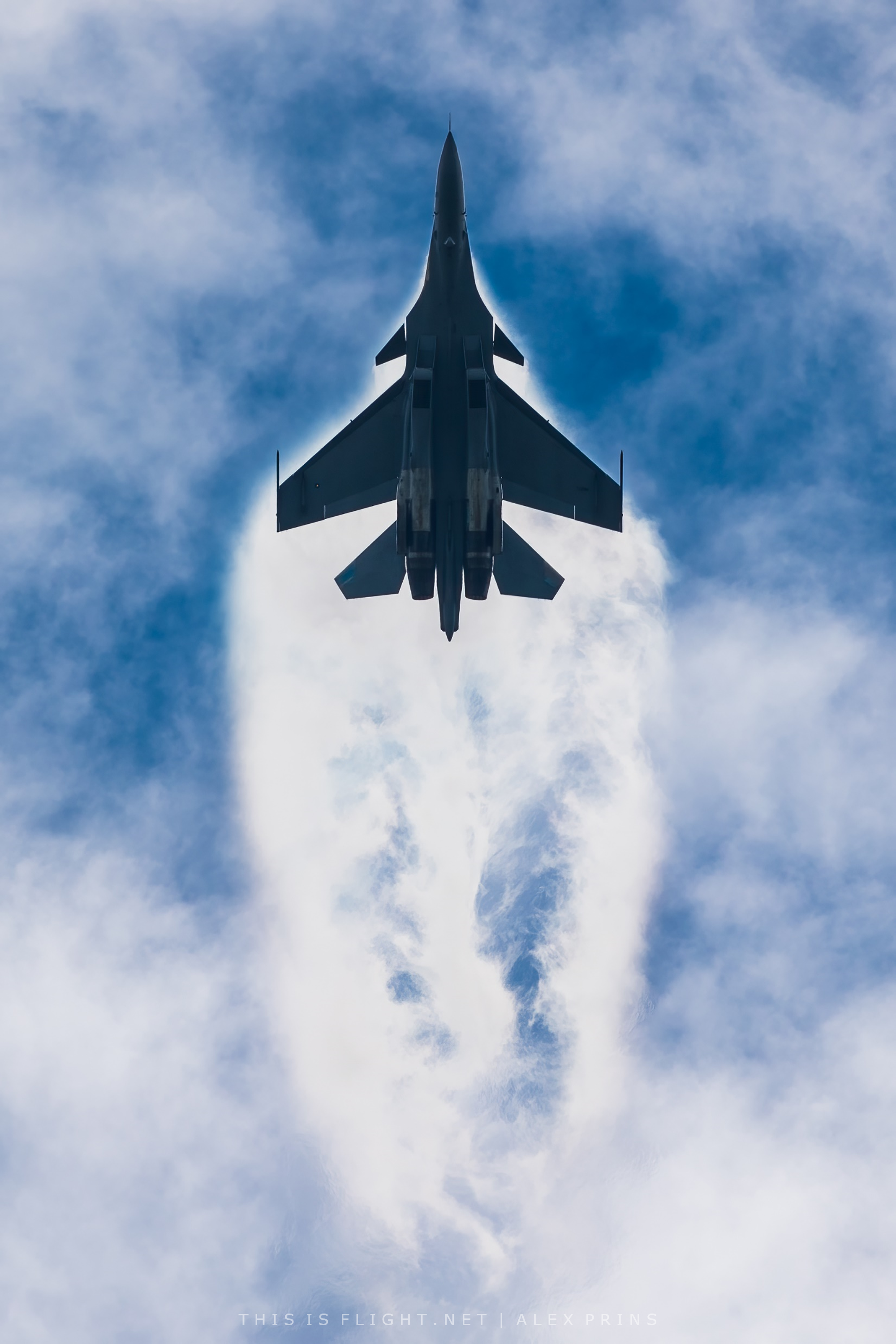
Realistically, most foreign visitors have always had to commit to LIMA before knowing what aircraft would be there, but this year was particularly frustrating. The vast majority of participating aircraft were announced in one go just ten days before the show began, in a pair of simultaneous (and conflicting) error-ridden documents that posed more questions than answers. The contents of the list, once deciphered, was… okay. It prompted much derision online, and wild claims that this was “the worst LIMA ever”. I would suggest anybody making such claims has a rather short memory span, but certainly it was true that the number of participating airshow acts was below average compared to the established standard over the past decade.
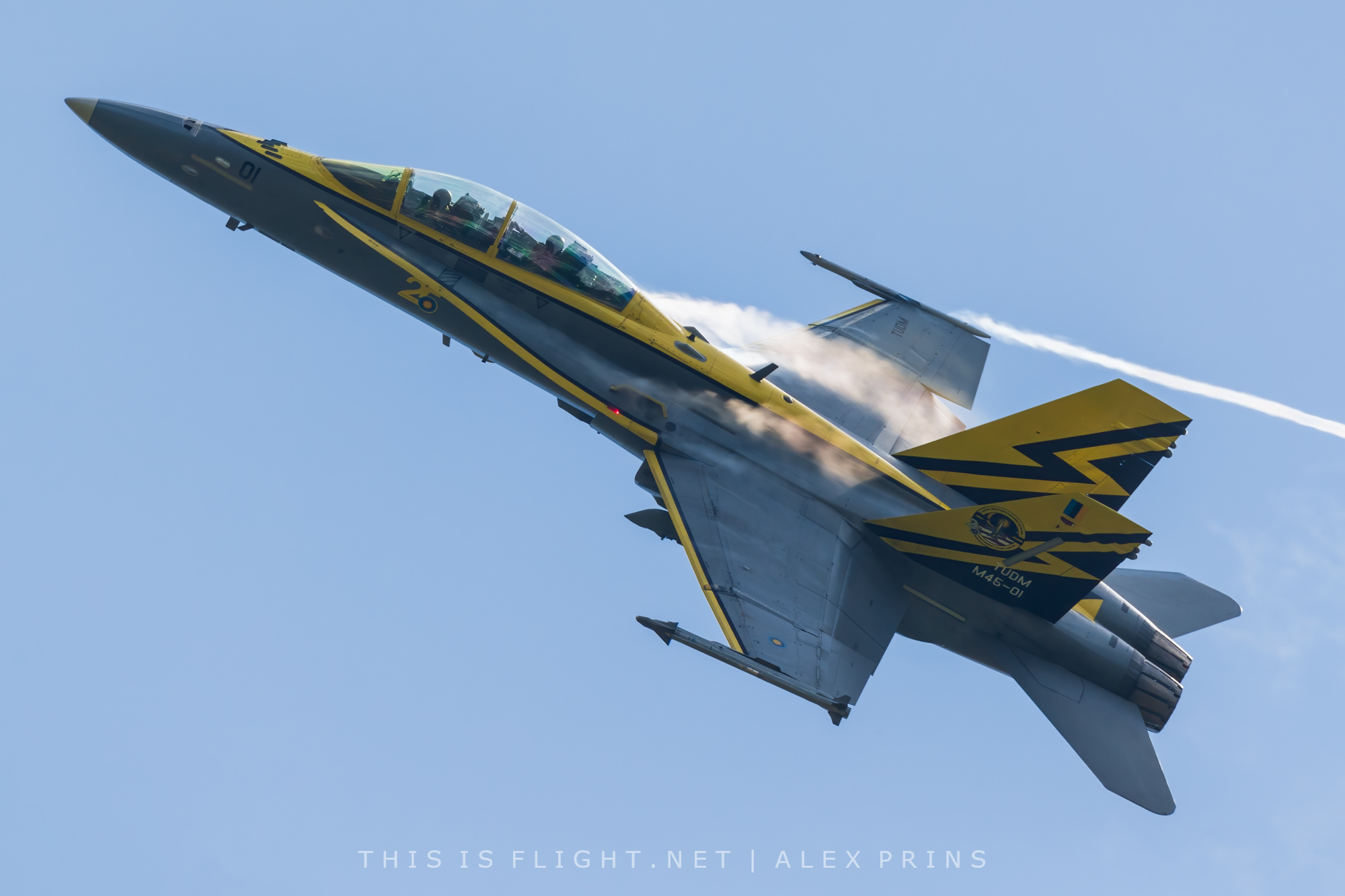
This is why attending LIMA requires a unique mindset and an awful lot of patience. Geopolitics and geography mean that it’s always inclined to be a show that blows hot and cold. It has never been an event with serious interest in communicating with the public, nor one that takes great effort to make their aircraft lists and press releases especially accurate. Just accept that you’ll be kept in the dark, avoid specific expectations and go with the flow. Good things will happen; it’s not worth getting uptight about exactly what those things will be, or when they will occur.
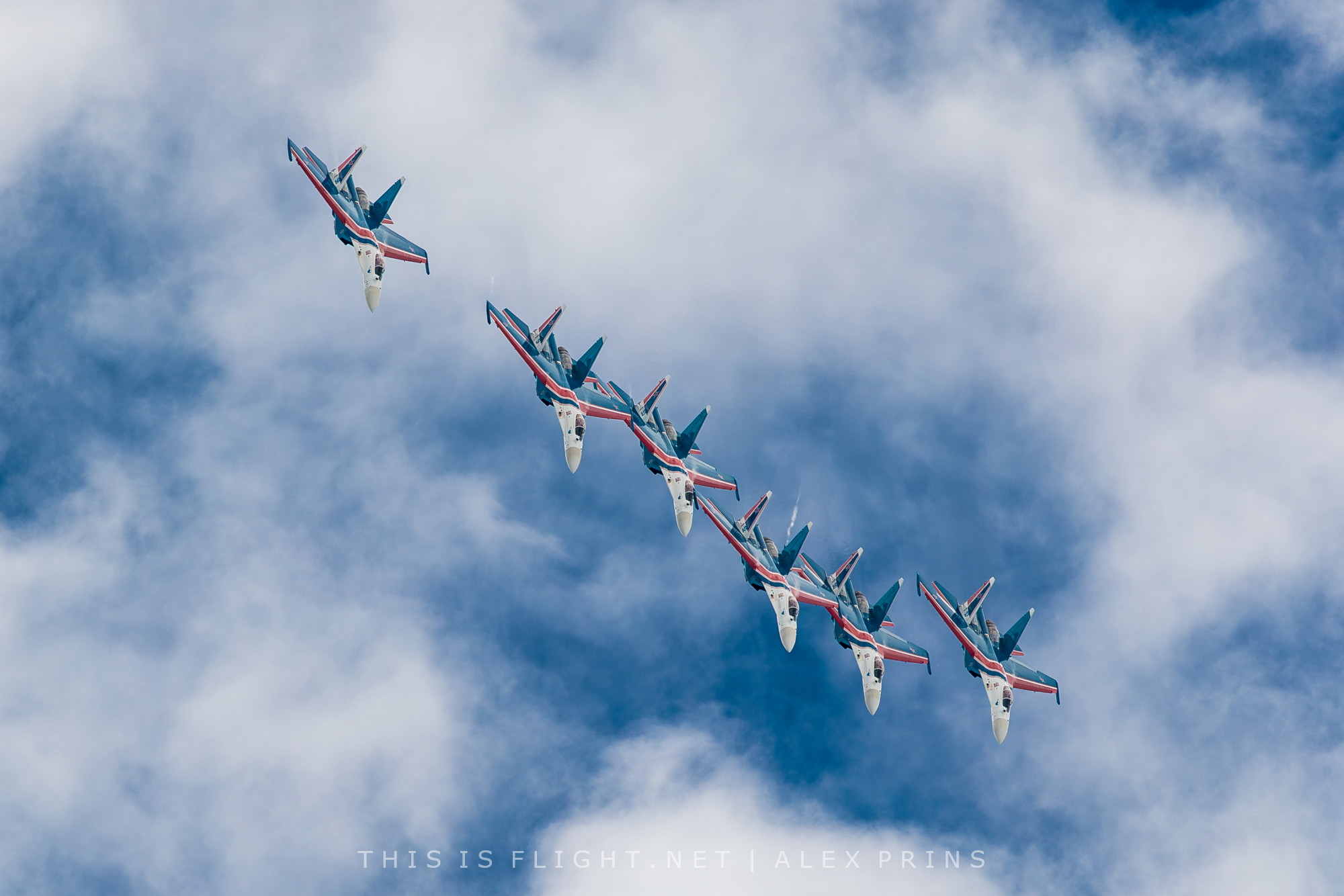
For the discerning airshow enthusiast, the LIMA experience starts five days before the airshow proper begins. Arguably, these five days are the best of the bunch, because not only are there smaller crowds to contend with, but you’ll see much more aviation action than on a typical show day (not least because LIMA’s legendary Opening Gambit is rehearsed, usually twice, during these pre-show practice sessions – and then doesn’t feature in the airshow proper after day one).
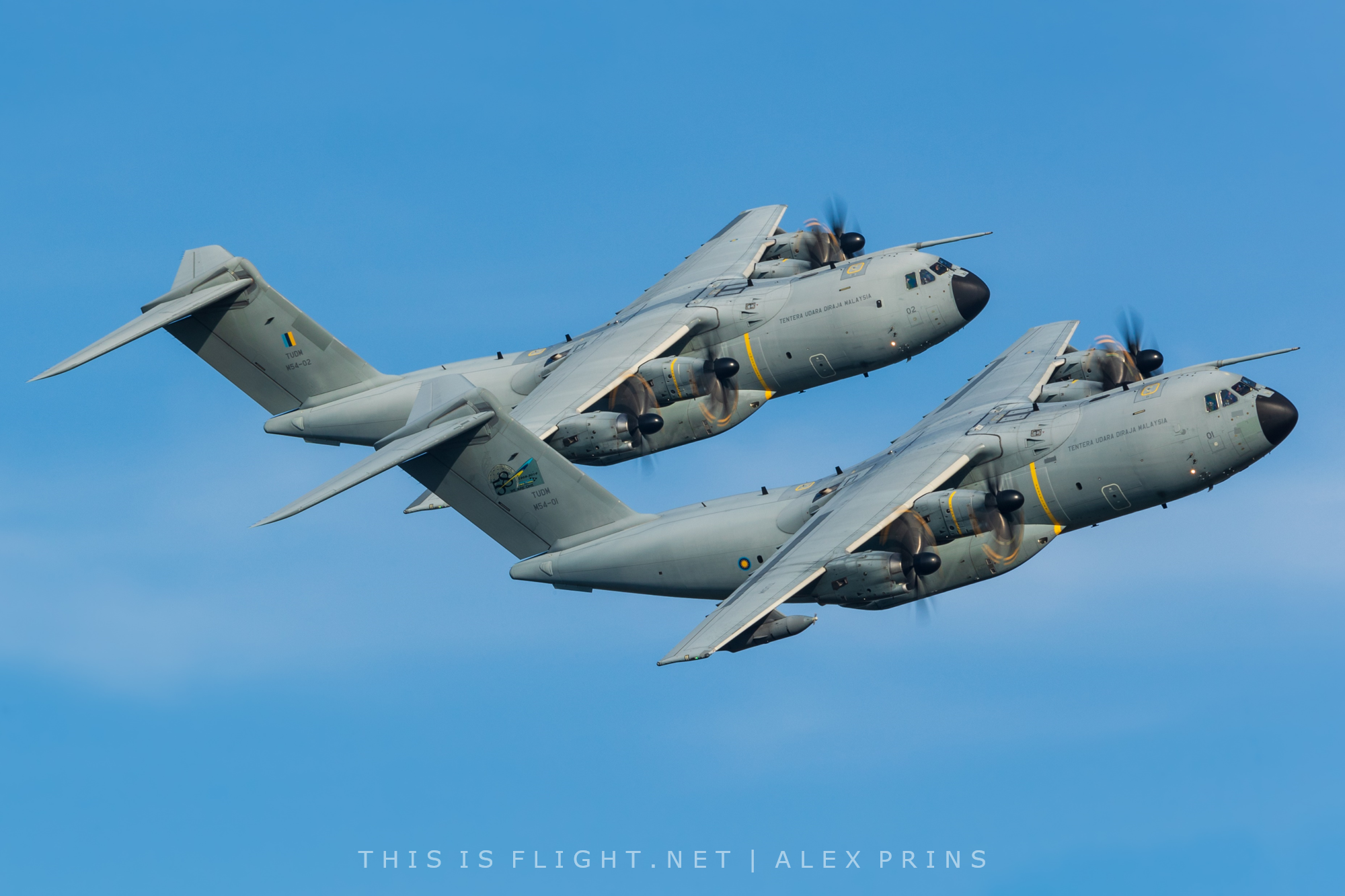
The Opening Gambit is the jewel in LIMA’s crown – probably the most exciting, action-packed, tightly-choreographed military airshow act on the planet. For me, at least, this is the real reason for visiting LIMA, and the trip is worthwhile for this performance alone.
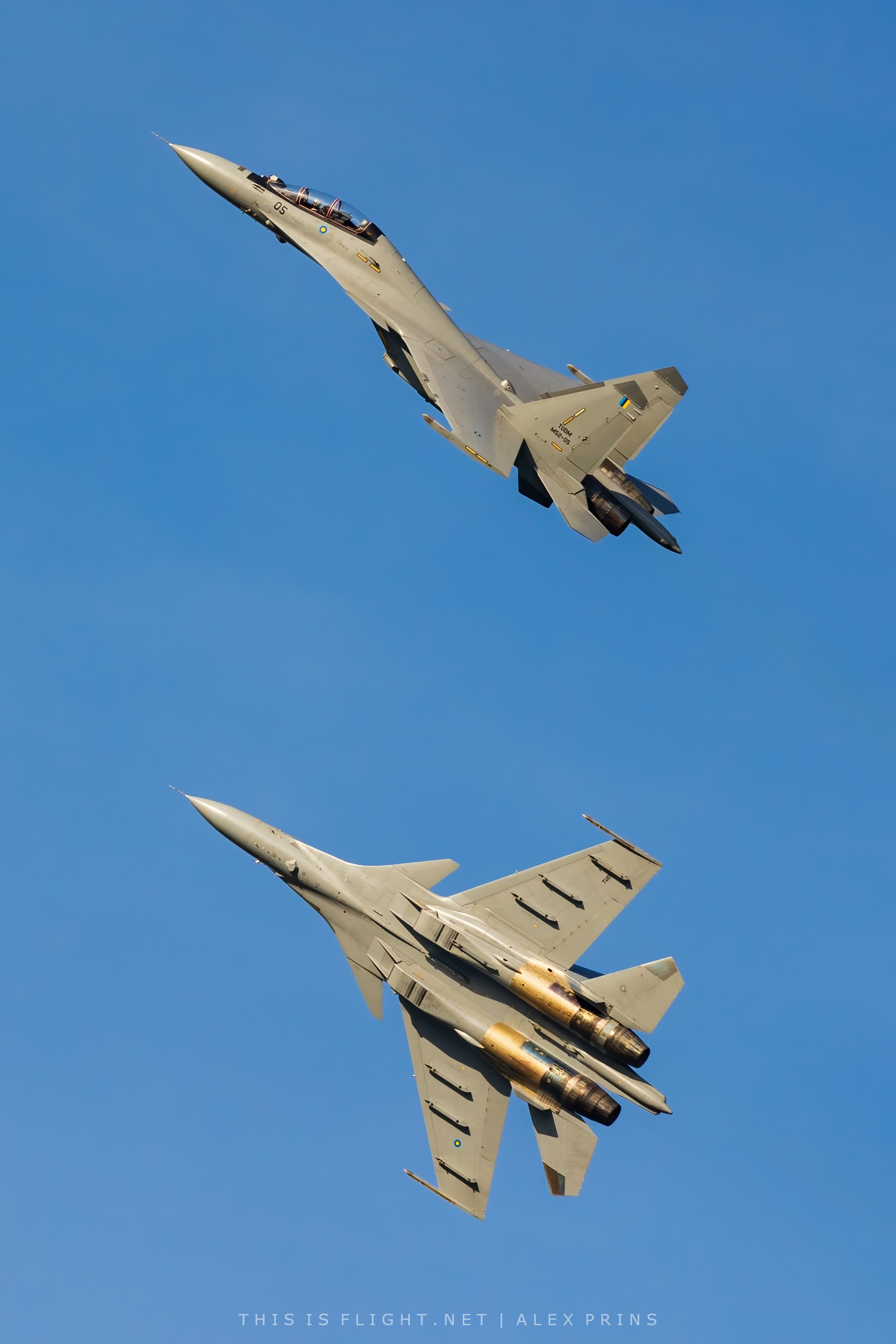
This year’s Gambit featured 24 aircraft, down from a planned 33 (a planned nine-ship of PC-7s was scaled back to a six-ship, one C-130 went tech on the day, and five Hawks were withdrawn following a landing gear collapse during a training session). The resulting spectacle, therefore, felt a little laboured and slow-paced compared to usual, with the fast jet formations lacking bulk – but even this reduced mini-gambit remains one of the most impressive airshow performances that will be seen anywhere in the world this year.
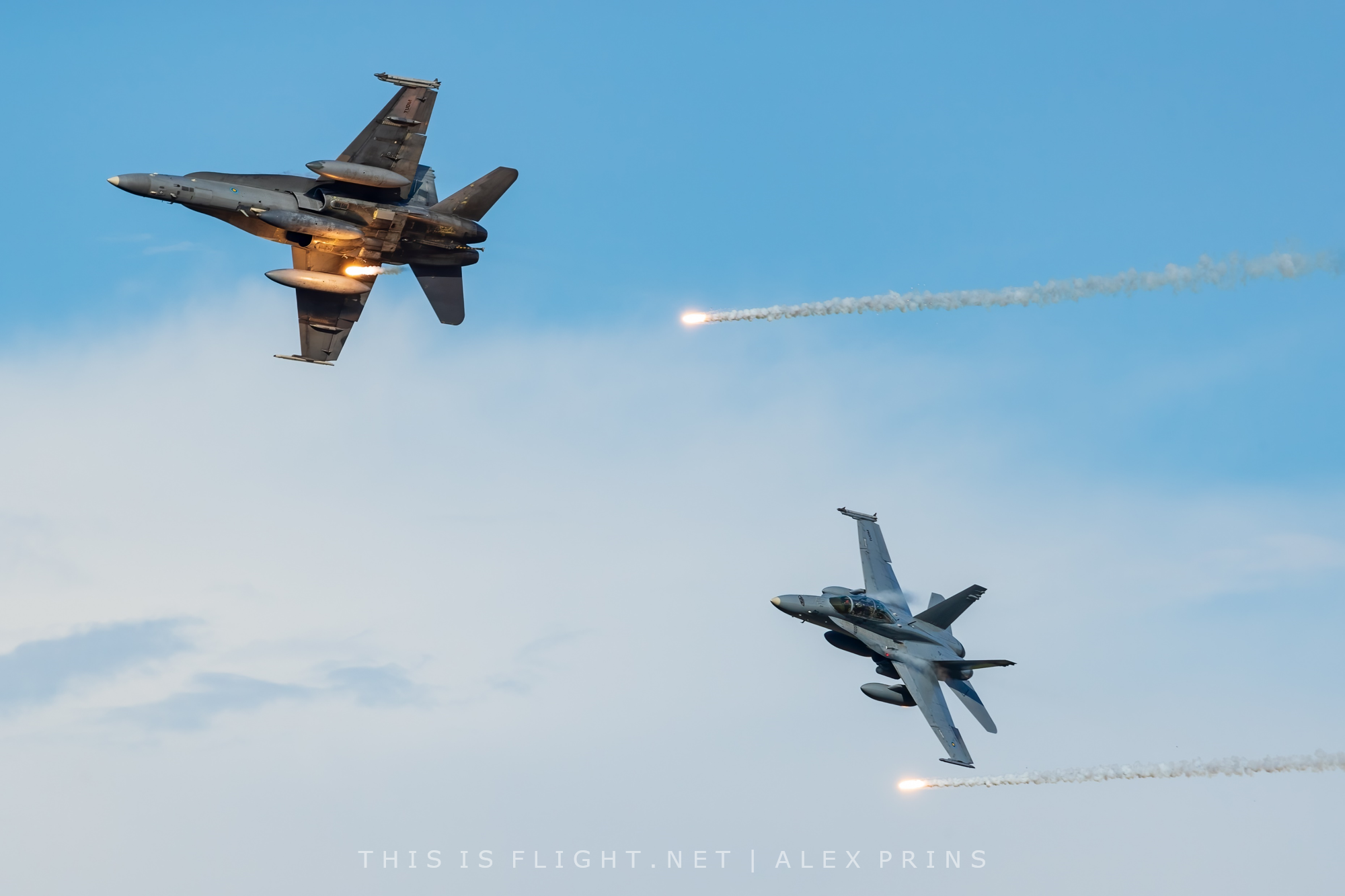
The opening minute is a true assault on the senses, starting with a transonic pass by an F/A-18D from the left, after which two more F/A-18Ds roared overhead dumping flares and performed a cross turn. Then, two Su-30s arrived from crowd rear and split, before tangling with a third Su-30 in a three-way opposition pass. It’s thrilling, fast-paced stuff, with almost every jet passing low over the crowd and very liberal use of flares.
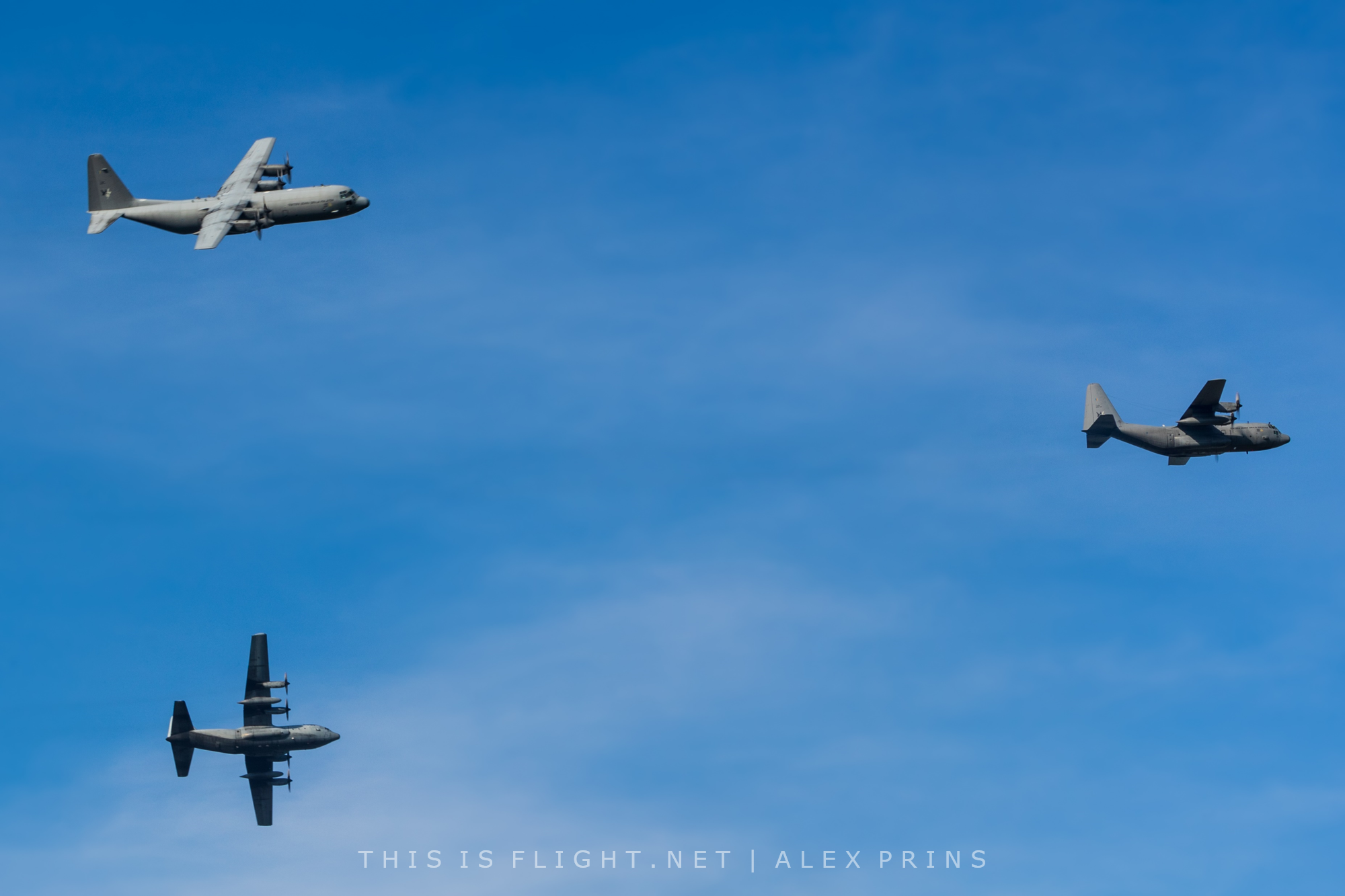
Next up, formation passes and bomb bursts by six PC-7 Mk.IIs, two C-130Hs and two A400Ms, following which two EC725 Caracals performed a short synchronised sequence including pedal turns, pirouettes and crossovers. Finally, the grand finale: 23 aircraft paraded directly overhead from the front, broken into four waves (eight helicopters, six PC-7s, four airlifters and, finally, five fighters). As the fighters passed over, a single Hornet roared in from behind for a sneak pass, dumping flares as it did so. It’s all very tough to capture on camera, but it’s quite the experience to stand underneath it all.
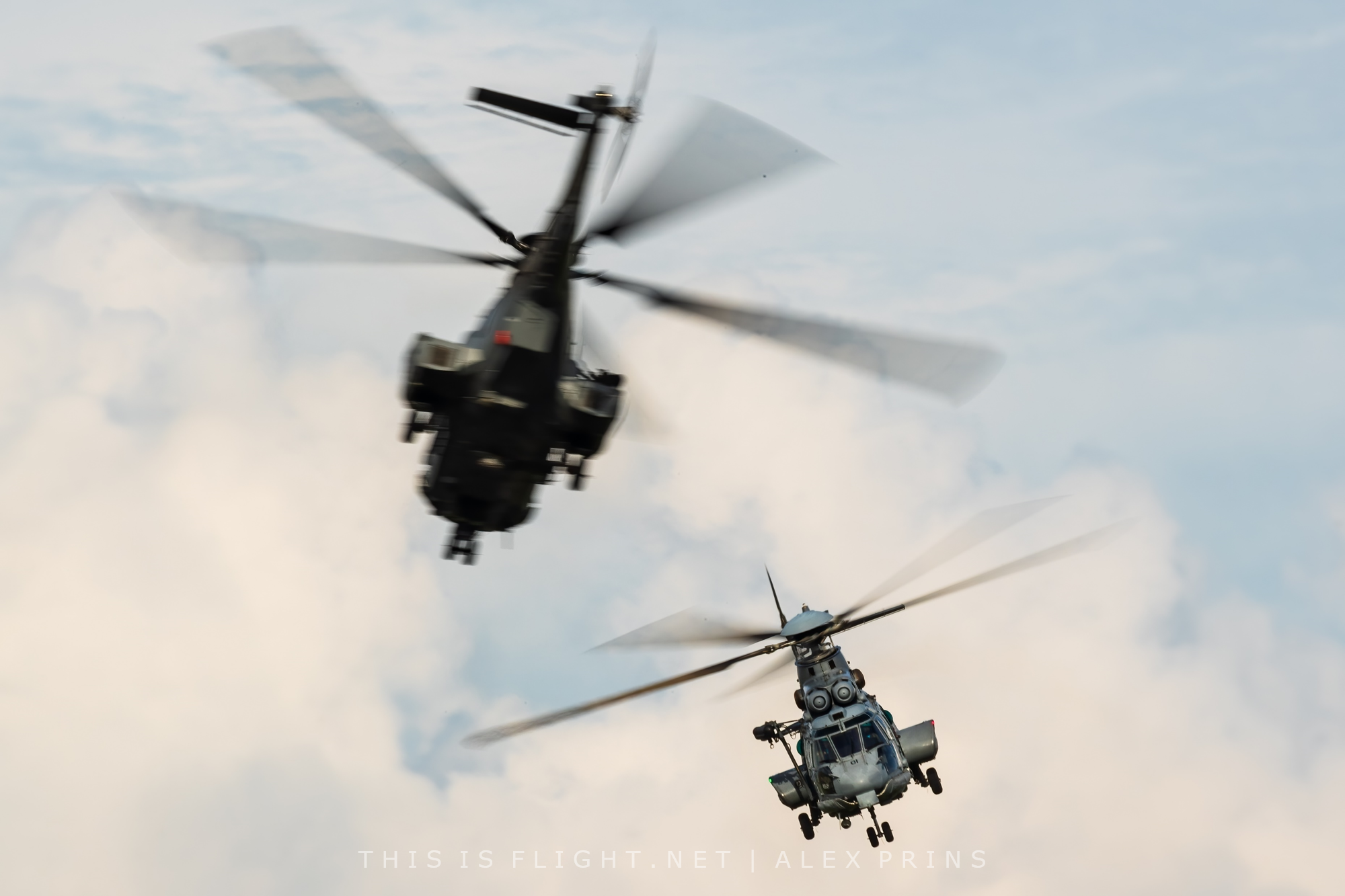
Adding to the awesomeness of the Opening Gambit itself is the delectable smorgasbord of viewing spots from which one can choose to watch it. A hilltop viewpoint on the south side of the runway benefits from great light and an elevated position, and offers an unusual perspective on the action – but it is relatively distant and has restricted sightlines. There are various spots around the airport perimiter, each with its own pros and cons. For those that can, spending at least one session in the showground itself must be recommended. From here, the light is terrible but the action is relentless and adrenaline-inducing – and it’s only from this position that the parallax illusions work. The photo opportunities and the experience varies wildly from one location to the next; this is something that you’ll want to see as many times as possible, probably savouring a new vantage point each time.
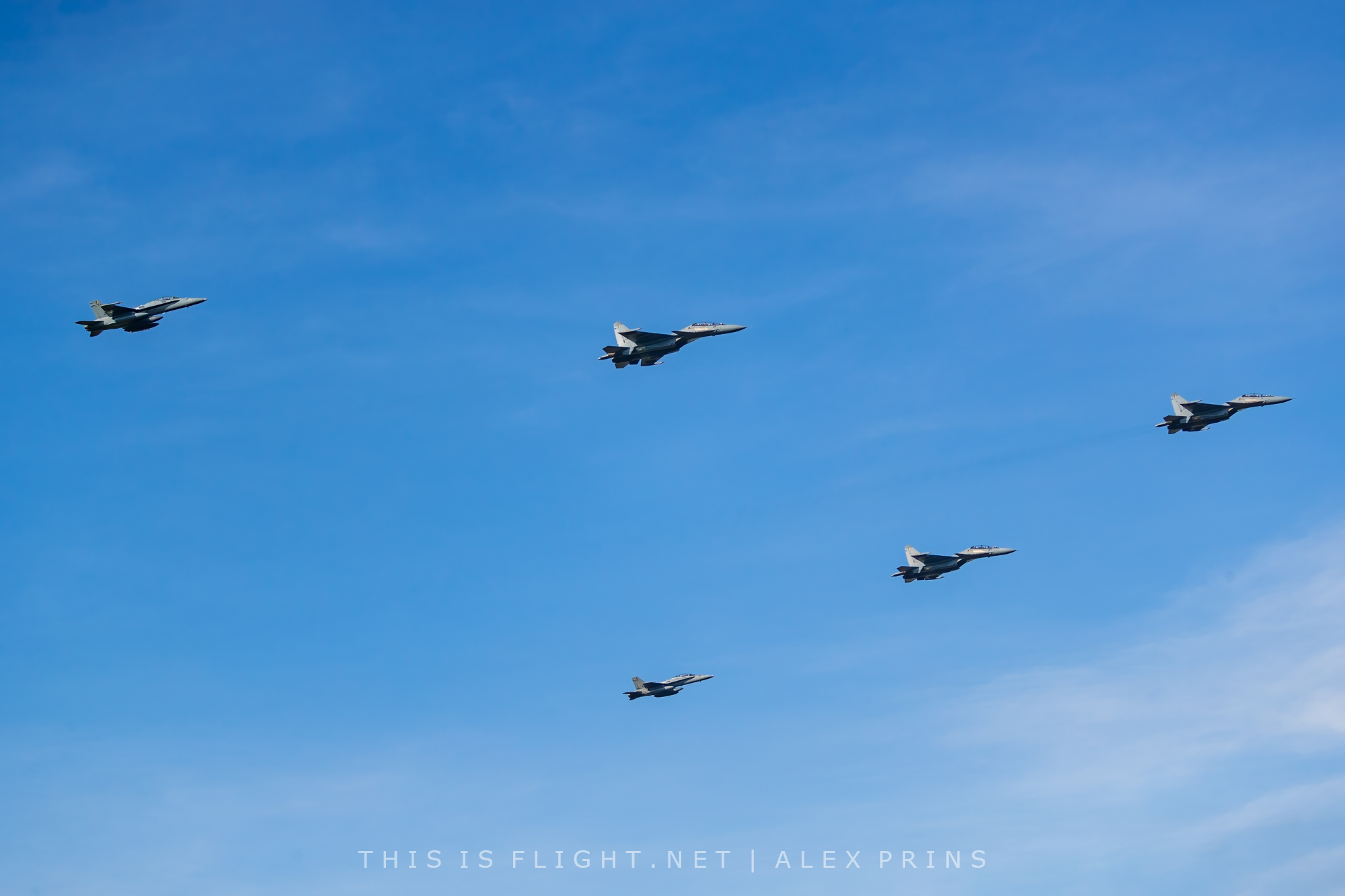
Later on the opening day, the US military was supposed to provide their own answer to the Gambit: a US airpower parade featuring no fewer than 14 aircraft: two B-52s, ten Super Hornets and Growlers, and two E-2 Hawkeyes, most of which came from a nearby Carrier Strike Group. Unfortunately, this turned into the dampest of squibs; the B-52s were retasked, and the carrier-based assets were hit by bad weather. All bar two eventually ran out of fuel and aborted, leaving just an F/A-18F Super Hornet and EA-18G Growler to perform a two-ship fast pass.
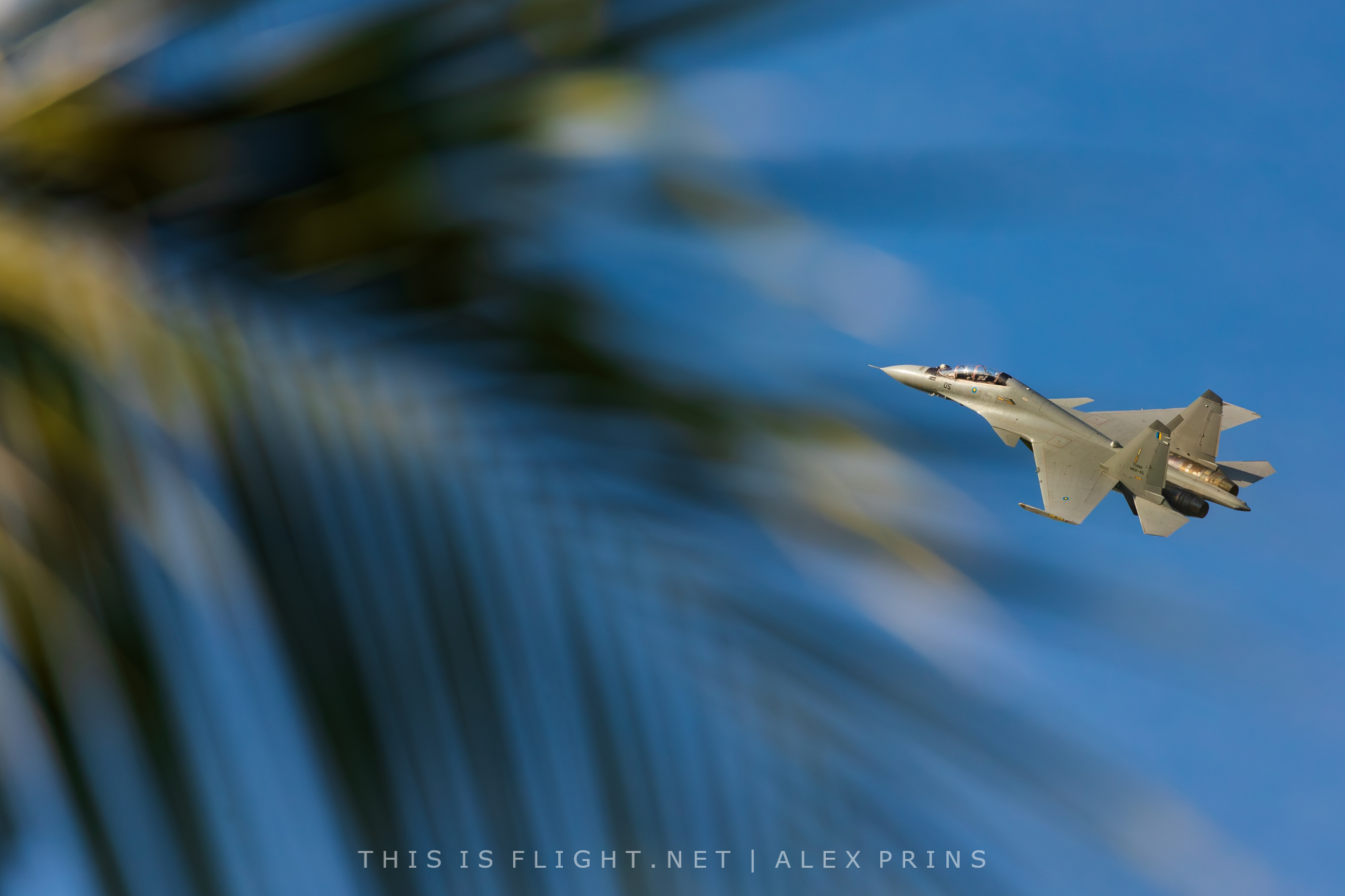
From here on in, we are left only with the conventional flying displays. These last for between two and four hours per day, but there was not nearly enough content to fill this amount of time. The planned participation of India’s Surya Kiran aerobatic team, withdrawn with just a few days to go, left a substantial hole in the line up, and most of those acts which remained were called in to fly twice or even three times per day to make up the time. At one point it looked like the flying display could take a further hit, in the form of a Russian Knights no-show. Planned arrival slots were repeatedly and inexplicably missed; eventually the team landed in Langkawi on the Tuesday morning, after the gates had opened on the first official show day. They were able to get the jets turned around quickly, and flew their first display just a few hours later, without having had the benefit of a practice sortie.
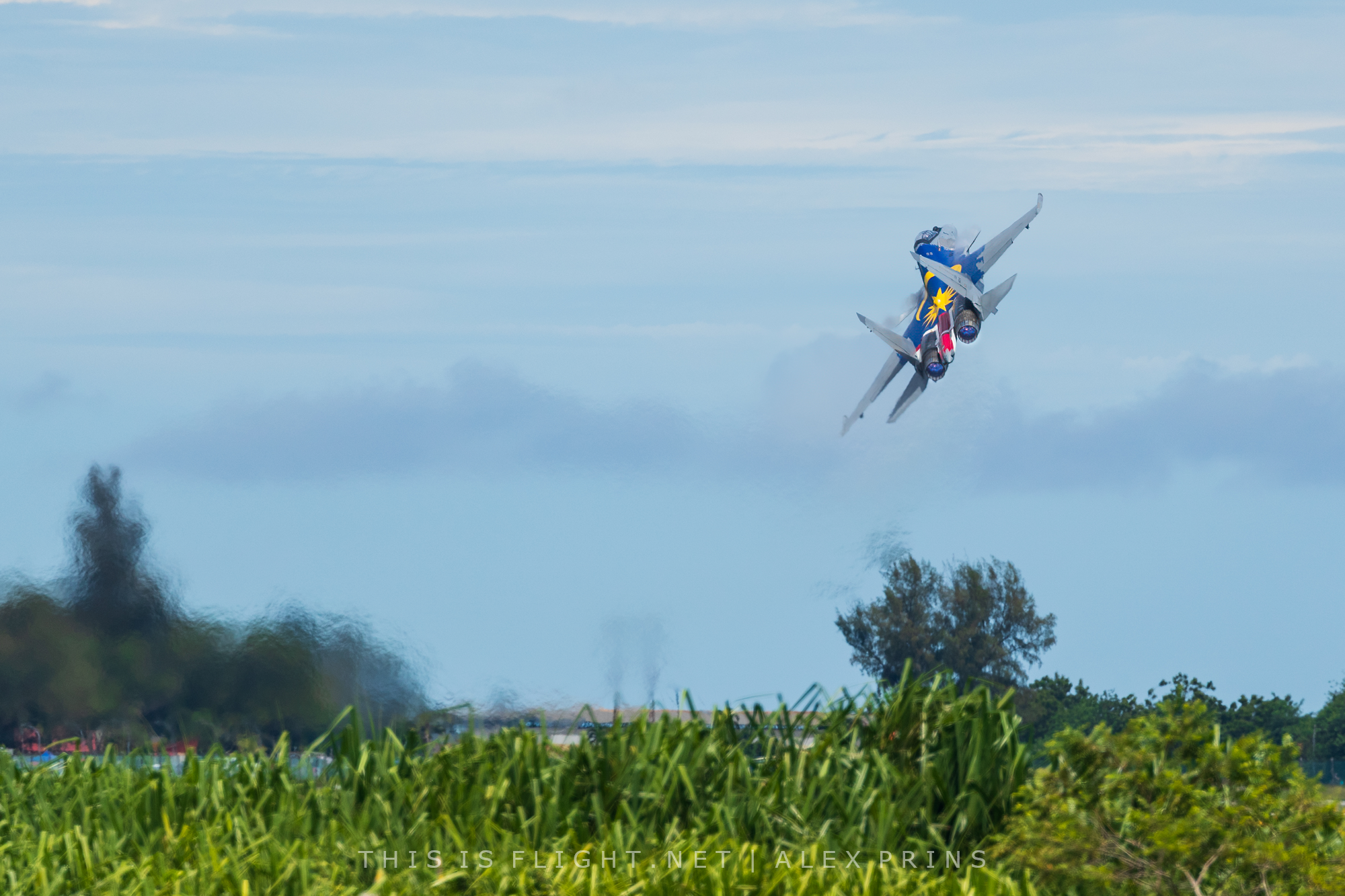
Perhaps the most eye-catching participants were Malaysia’s Sukhoi Su-30MKM solo displays. The air force fielded two Su-30 displays, each flying a different display routine. One jet, wearing a newly-applied special paint scheme called ‘Toruk Makto’, was the centre of attention, crewed by a high-profile pairing: Colonel Mohamad Norazan Othman, the commander of Gong Kedak Air Base, and Chief General Tan Sri Mohamad Asghar Khan Goriman Khan, chief of the Royal Malaysian Air Force.
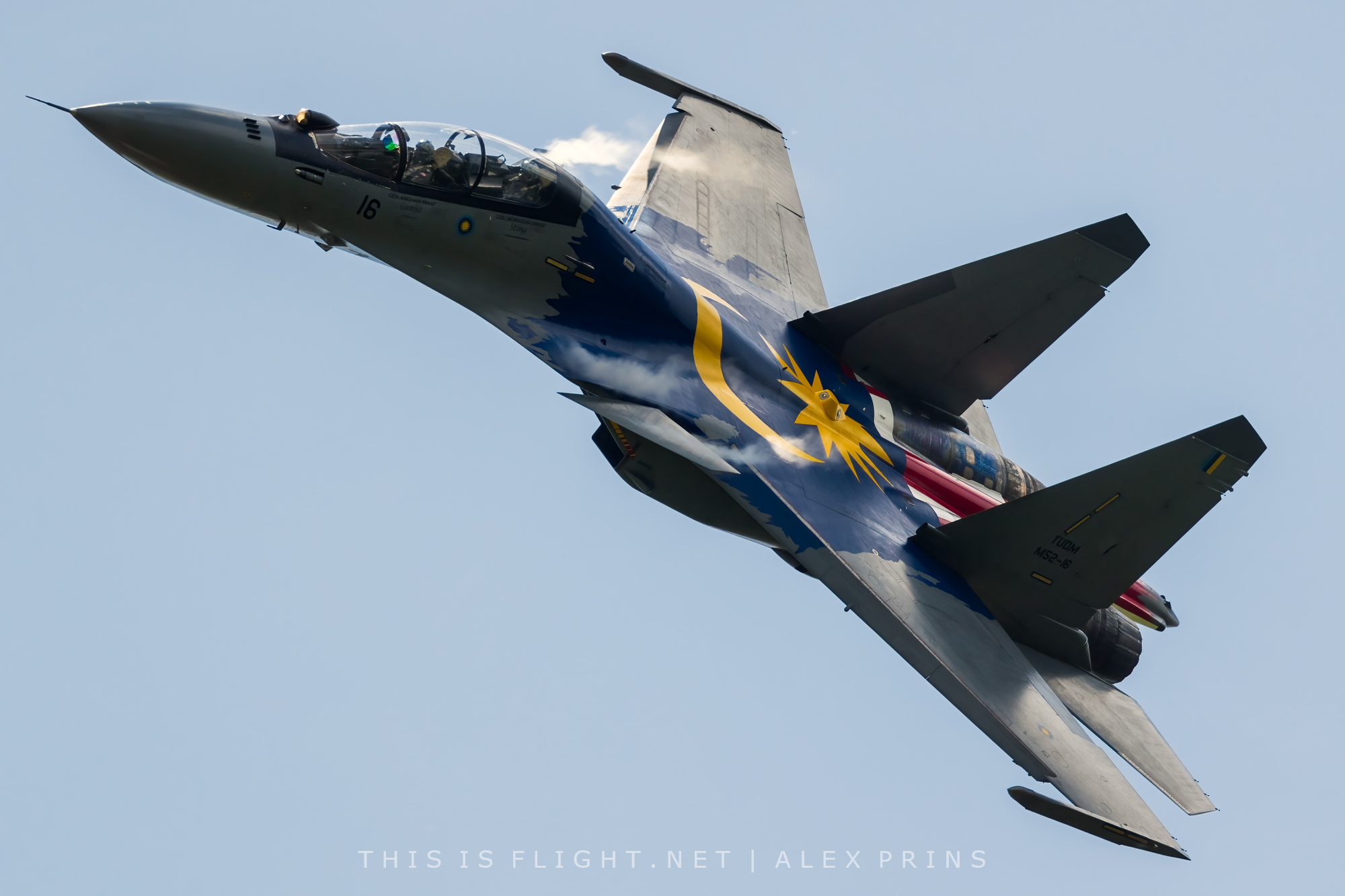
Toruk Makto’s display was, on paper, perhaps the best Su-30 solo the RMAF has ever staged, featuring all the main variations of the cobra and cobra stance, as well as a TVC-J Turn, pedal turn, and an incredible new move called the Toruk Turn, combining a TVJ-J Turn and pedal turn into a single gravity-defying manoeuvre. Sadly, the airshow did not take place on paper. In reality, the performance was consistently high and extremely far from the crowd – much moreso than Malaysian Su-30 displays of the past. Rarely did the jet get anywhere near to the spectators; even from unofficial viewing spots one mile in front of the showground, the display still took place the wrong side of us. It was imperfectly-flown, too, with the on-crowd cobra-stance manoeuvres being repeatedly botched on all bar one or two occasions. On the bright side, the thrust vectoring manoeuvres were, it must be said, extremely compelling, and the Toruk Turn in particular is a jaw-dropping sight.
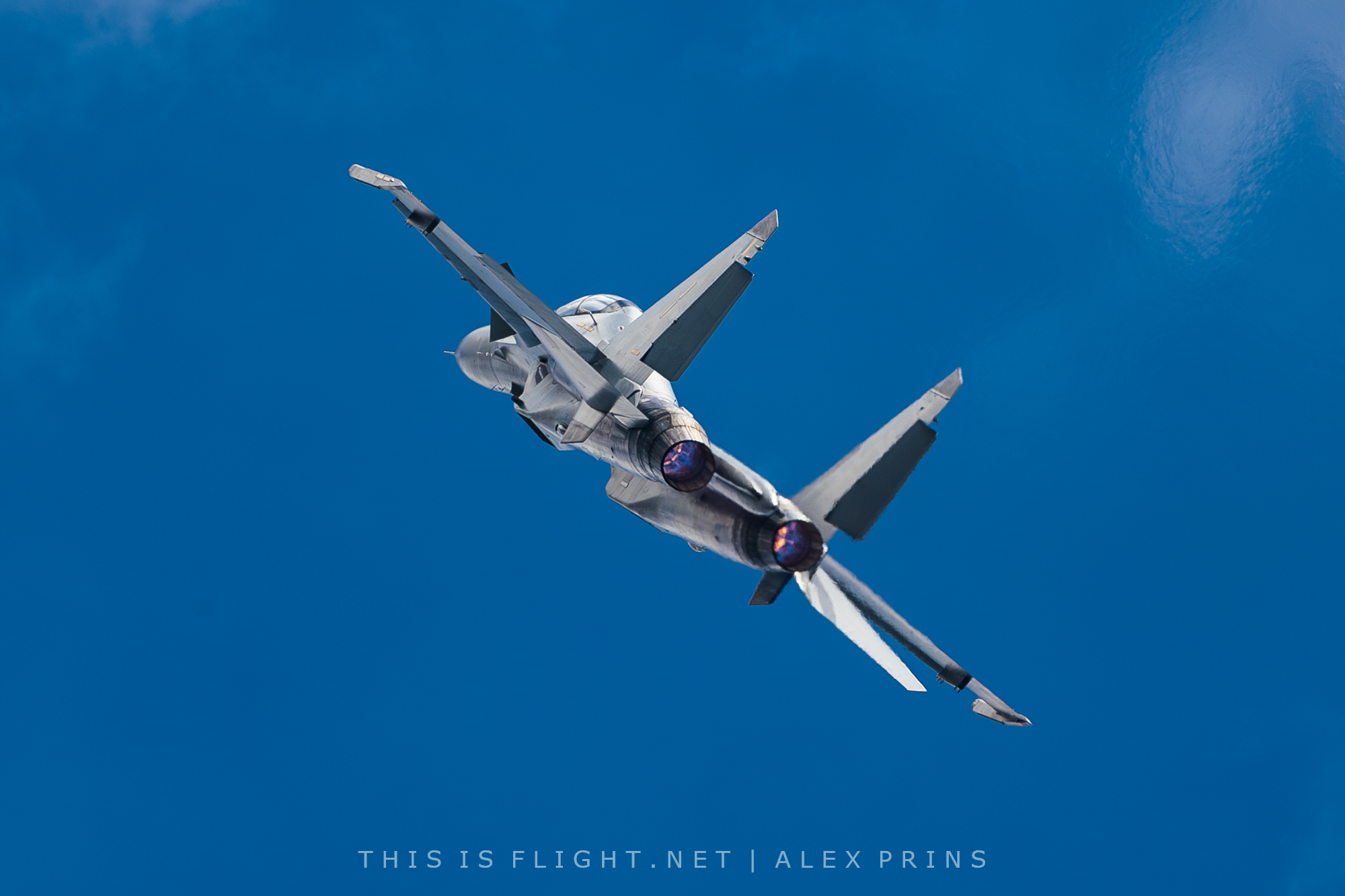
The second Su-30 solo, flying a standard grey jet, provided a slightly lesser showcase of the Sukhoi’s thrust vectoring, but it did at least manage to get a little bit lower and closer to the crowd. This performance included some more conventional manoeuvres, such as a knife edge pass – how nice it would have been to see the Toruk Makto special scheme at similarly close quarters…

The RMAF also staged solo displays with an F/A-18D Hornet. Typically, its Hornet displays are very good indeed, with the little jet skidding around the sky in Sukhoi-esque fashion and performing Hornet staples such as square loops and pirouettes. This year, however, the Hornet display was mostly notable for how short it was: it didn’t feature a single vertical manoeuvre, and lasted only six minutes.
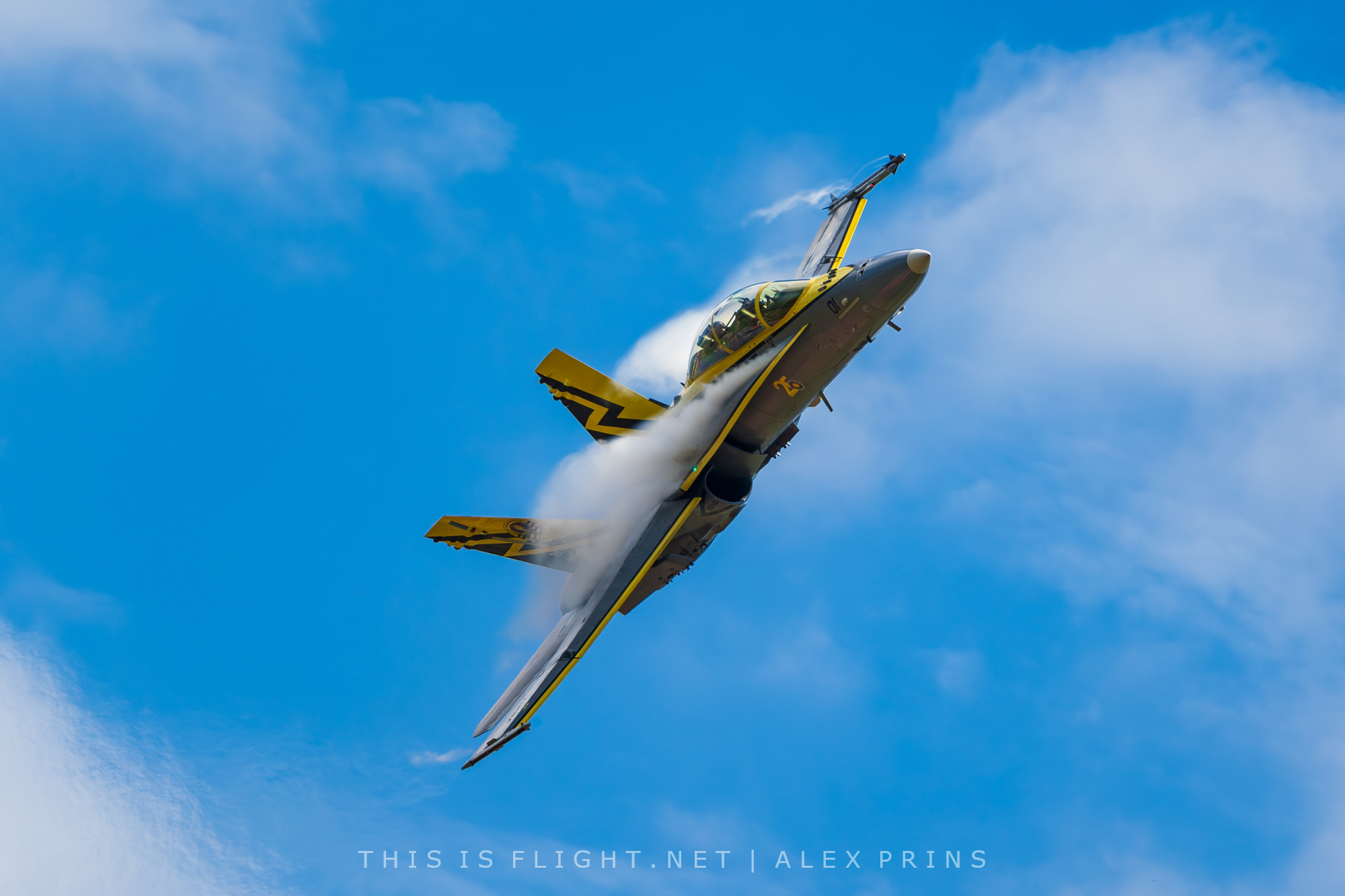
The display itself was simplistic but enjoyable: high-G turns, rudder rolls and variations of hesitation rolls, with extra colour being added by flares and occasional use of the ‘Pikachu’ special scheme jet. It was interesting to see the pilots increasingly tightening their repositioning turns as the week progressed, eventually getting to the point where they were arriving on the display line with too little time and space to perform the manoeuvres themselves, rolling level for the briefest of periods and then turning straight into the next reposition! Still, one should not complain; this was the lowest, closest, tightest fast jet action of the week.
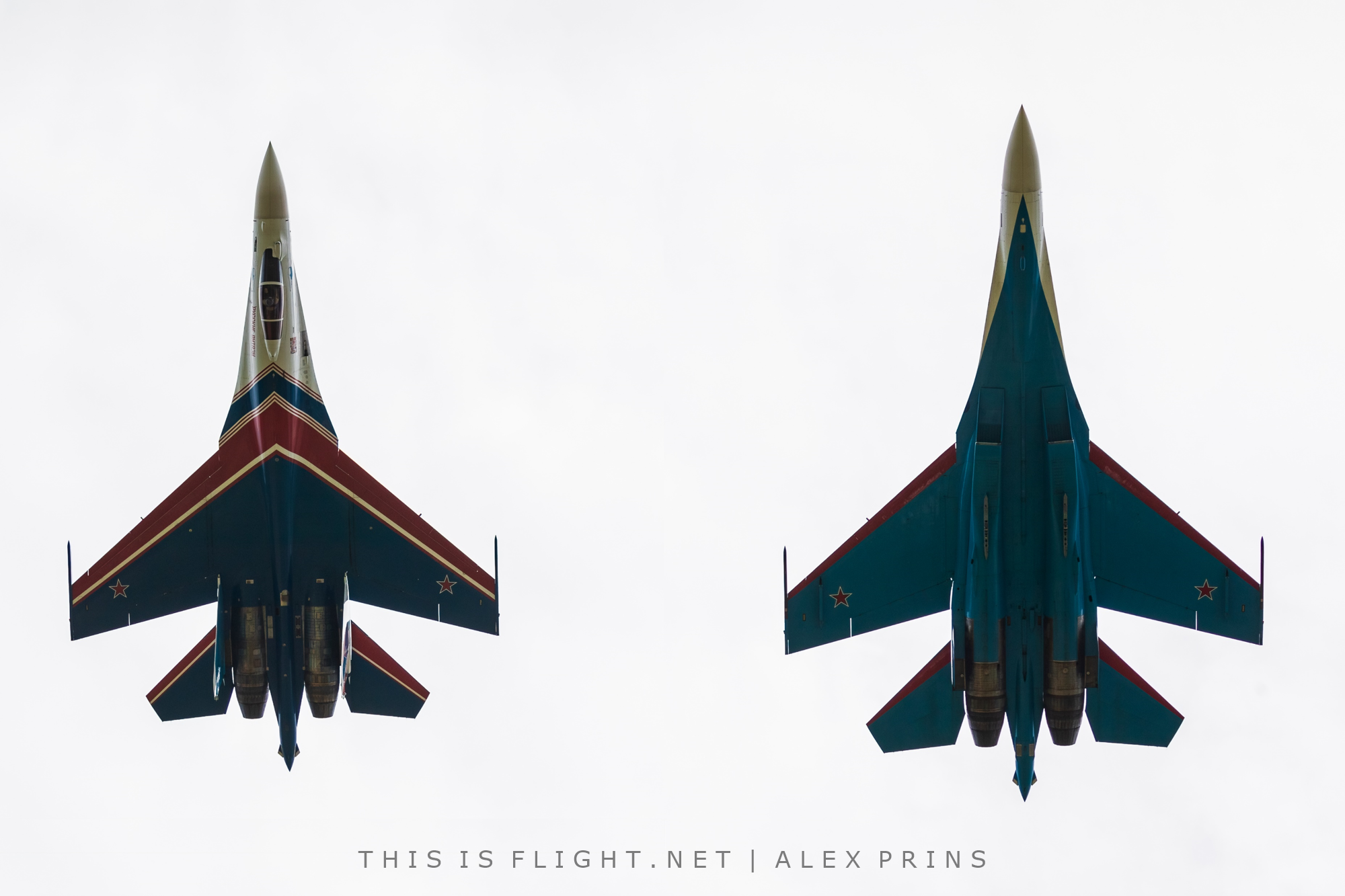
There were two national aerobatic teams present at LIMA this year, with the Russian Knights grabbing the lion’s share of the attention, flying with six Sukhoi Su-35S thrust-vectoring fighters. Initially, they perform a sequence of six-ship loops and 360s in Delta formation. These are the biggest, heaviest and most powerful aircraft ever used by a fully-fledged aerobatic display team, and watching them slide around the sky while carrying visible inertia into every corner is quite a sight, although this part of the show is perhaps a little longer than is necessary.
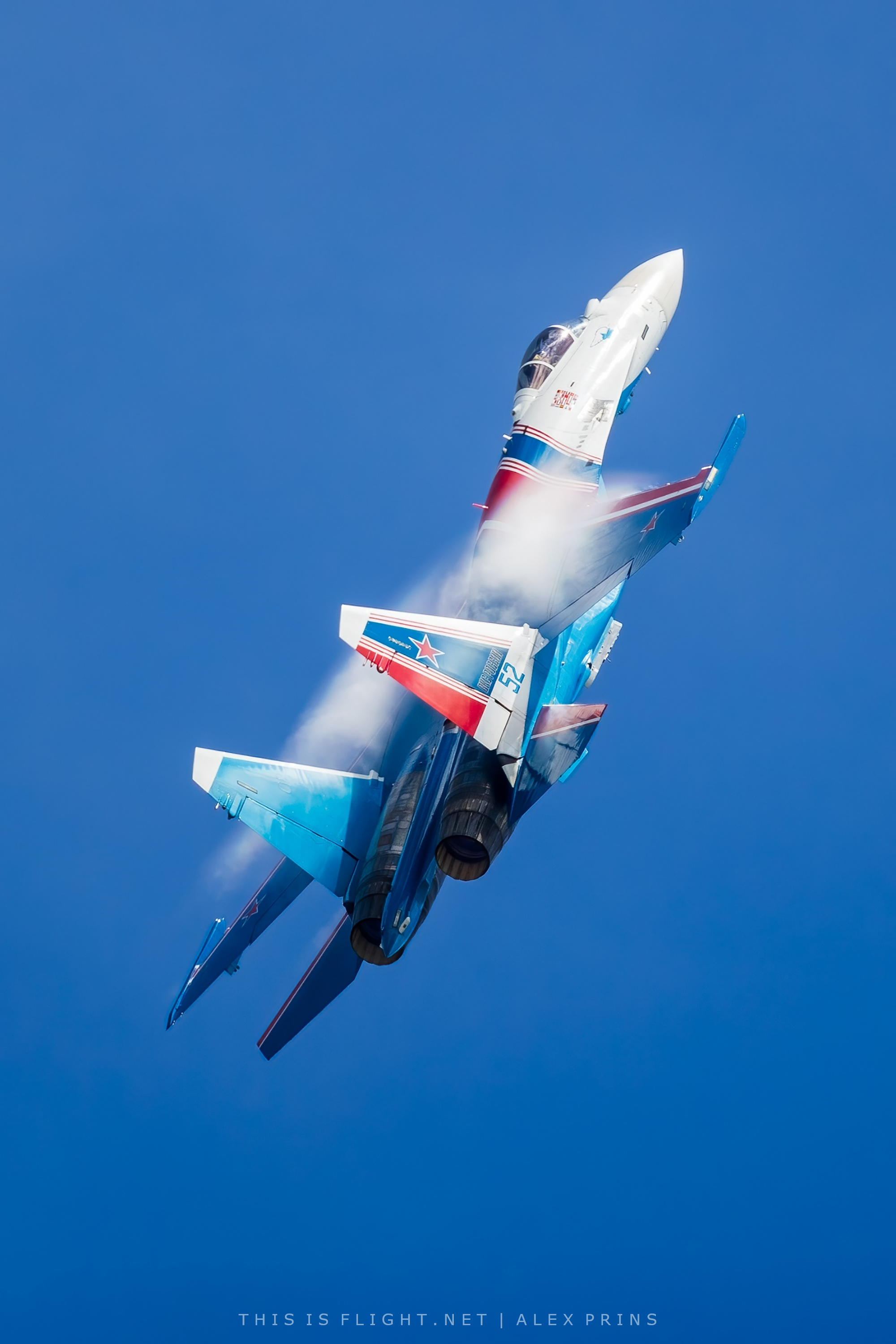
In pairs, the jets gradually break off to land, and eventually, the final two go on to perform a spellbinding aerial tango of breathtaking complexity. Watching a Su-35 perform a pedal turn or J-turn is impressive under any circumstances, but seeing two of them do it at the same time, at opposite ends of the runway, and then exit towards each other to fly an opposition pass, is really quite something (albeit I didn’t see a single such pass executed especially precisely during any of the five Russian Knights performances I watched).
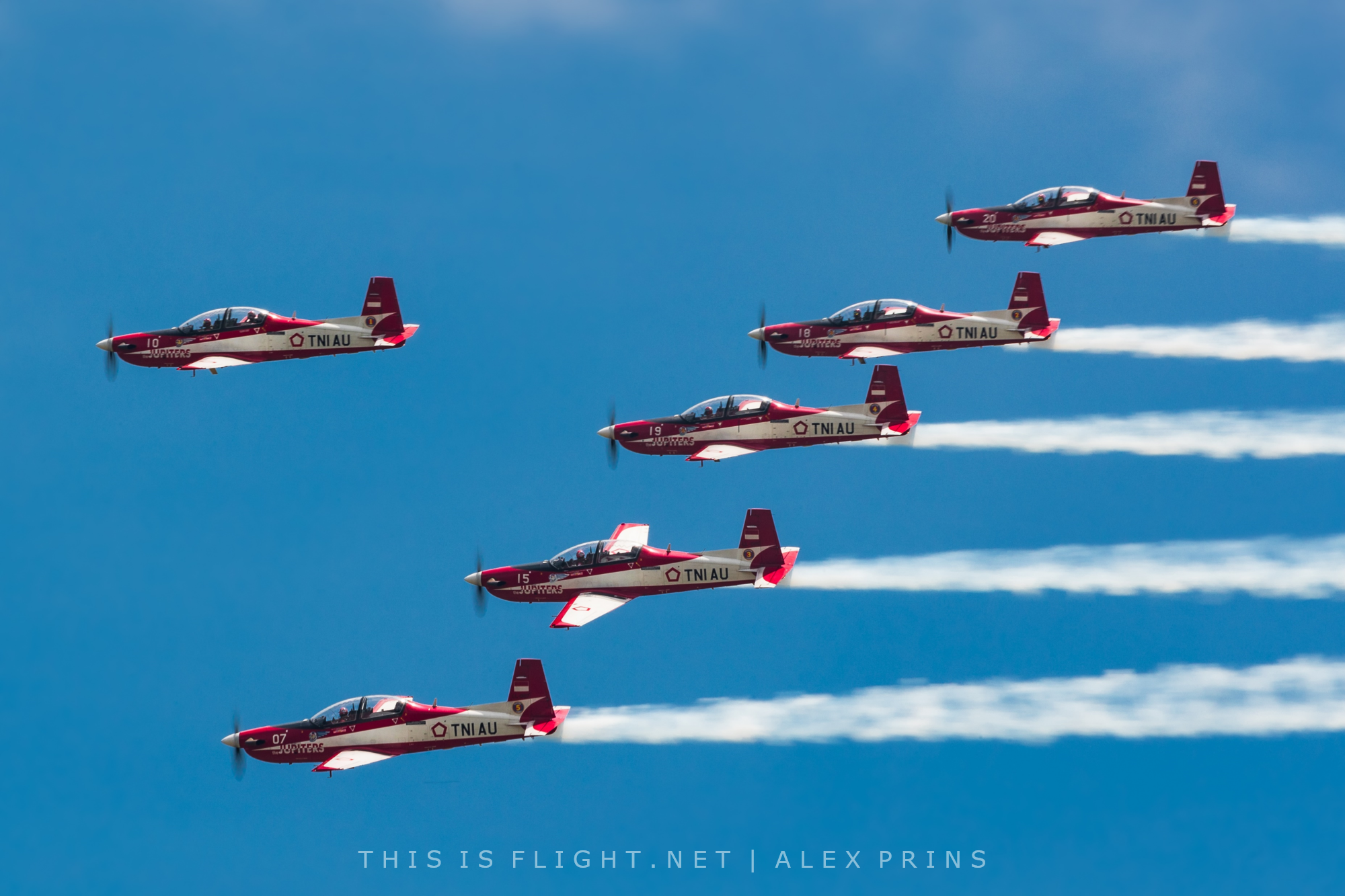
With the Russian Knights’ unusual display routine, it was quite refreshing to see a more conventional team display in the form of Indonesia’s Jupiter Aerobatic Team. The Jupiters are LIMA regulars and rarely get the attention their deserve amid a mass of colourful jet teams. This year, however, Team Jupiter was exactly what LIMA needed: a solid, middle-of-the-road formation aerobatic team that performed classic opposition passes, corkscrews, bomb bursts and all the other typical airshow manoeuvres that the Russian Knights omit.
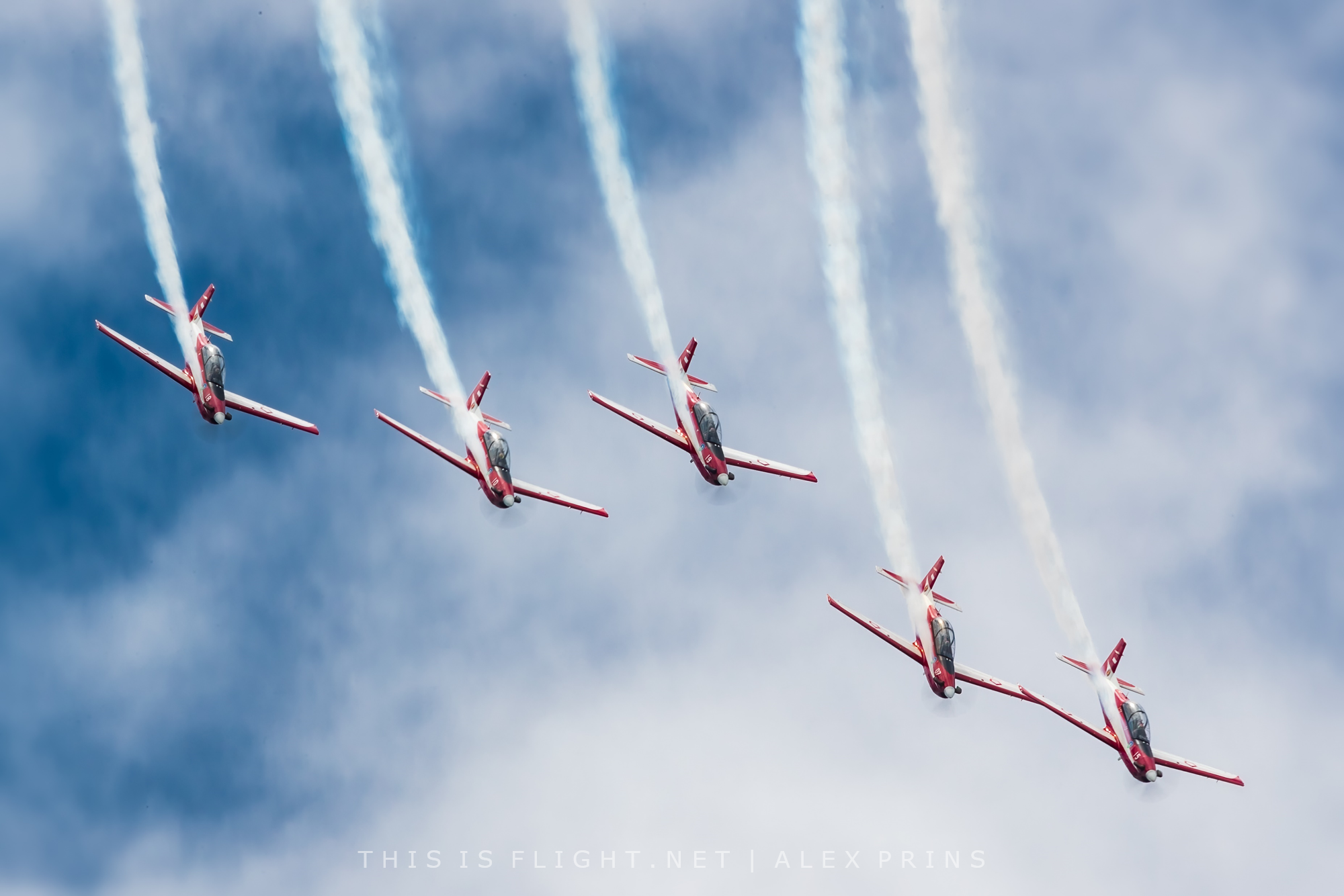
Without doubt, the Jupiters couldn’t provide the jaw-on-the-floor spectacle of the Russian Knights, and their display routine has been simplified a bit over the last few years, but their show is nonetheless a pleasant mix of bread-and-butter airshow flying, including a series of loops in unusual formations, with up to four aircraft flying line abreast – no mean feet in little KT-1B Woongbis with only 950 shaft horsepower. They added some much-needed calm and restraint to an otherwise relentlessly quirky flying display programme, and their display featured none of the imperfections that were evident from most of the other flying display participants.
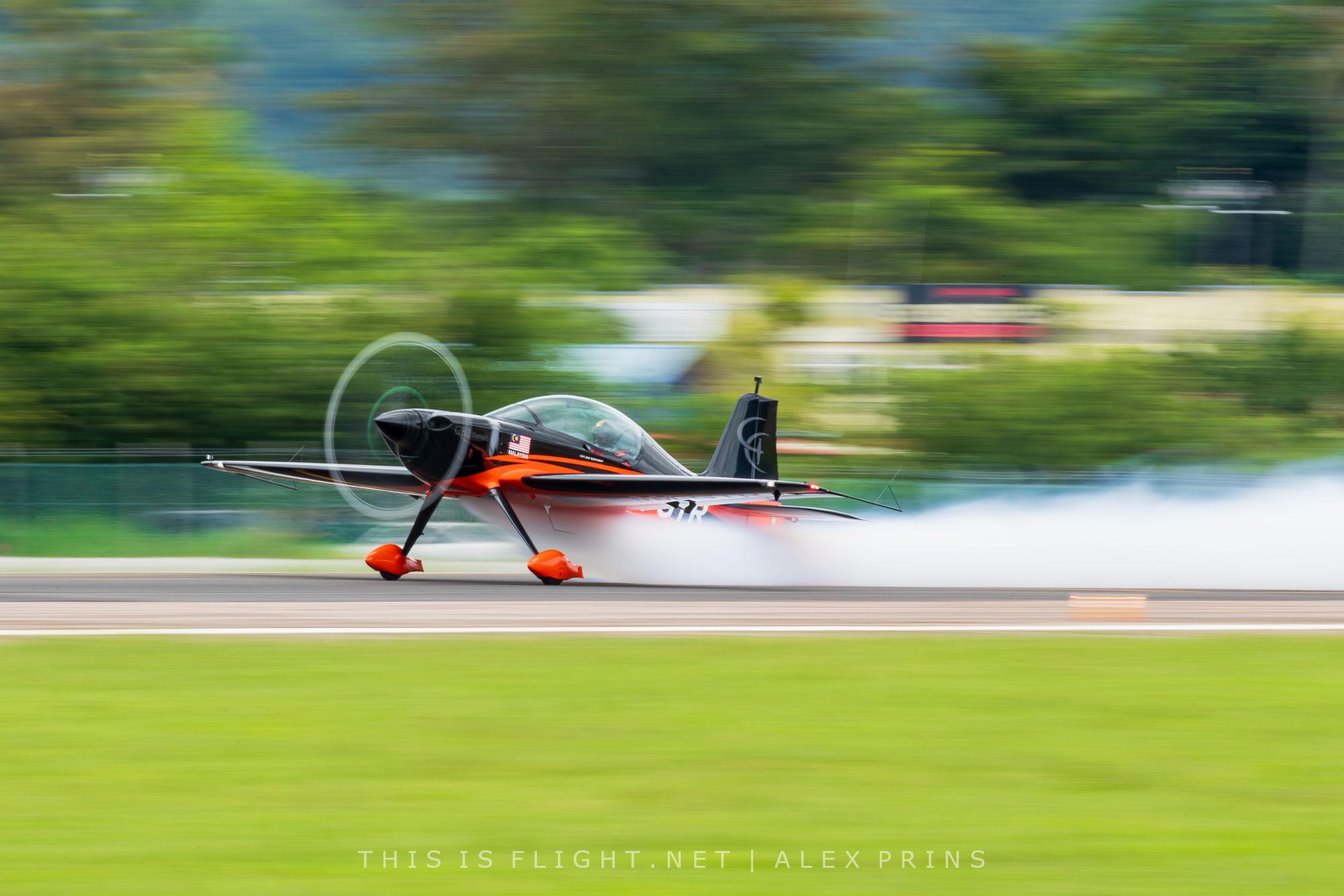
Finally, unlimited category aerobatics were provided by Halim Othman’s Extra 300L (Halim shared the cockpit with UK aerobatic ace Mark Jefferies) and Layang Layang Flying Academy’s Gamebird GB1, usually used for upset recovery training rather than airshows, which was displayed by John Sham. The latter barely scratched the surface of what the Gamebird can do, but the performance did improve noticeably through the week.

Jefferies staged a more full-throated performance, and also performed a spellbinding sunset display over Cenang Beach on the opening day of the show – a performance which was not advertised in advance to the public, as far as I could tell. This was Malaysia’s first ever pyrotechnic air display, and though the quantity of pyro was modest, it was nonetheless a memorable spectacle, thanks in no small part to the fact it took place against one of the most incredible, vibrant sunsets I have ever seen. After a long, hot day at the airport, an evening on the beach was just what we all needed, and this display was a very notable bonus thrown into the bargain.
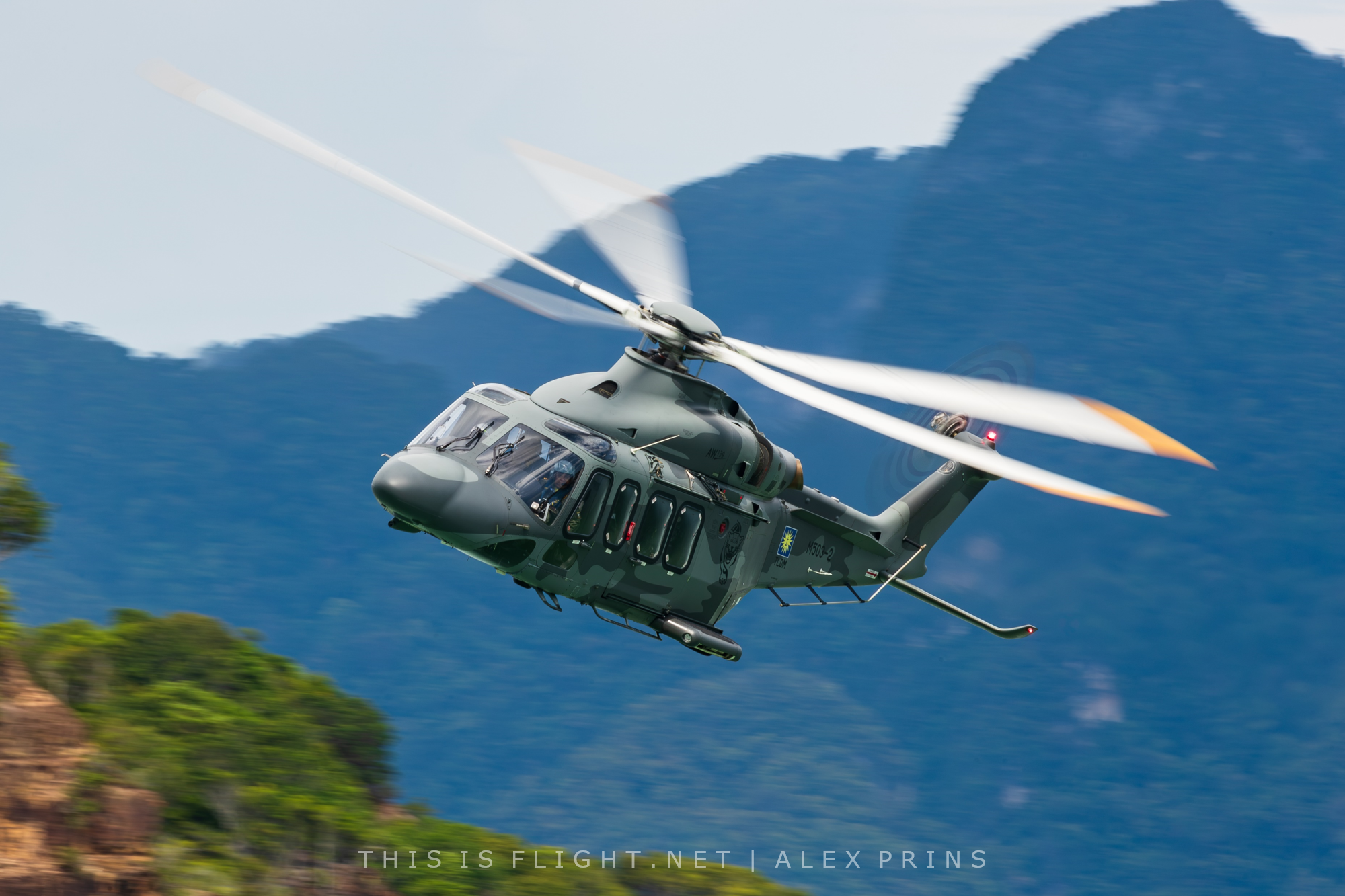
LIMA is far more than just an airshow, and if – between the five rehearsal days and five show days – you get bored of seeing the same half dozen airshow acts over and over again, then thankfully there are plenty of other things to see. Nautical-themed activities take place each day at Resorts World, including warship tours and twice-daily maritime shows.
The maritime segment even has its own version of the Opening Gambit, which started with a stonkingly low topside pass by a Malaysian Navy AW139. Divers then jumped from the AW139 into the water to pass an activation key to the emcee, kicking off the rest of the Gambit. Here followed parade passes by various speedboats and helicopters, which then led into an entertaining hostage rescue scenario, which saw a civilian vessel come under attack from pirates and its occupants taken to a terrorist stronghold on the shore.
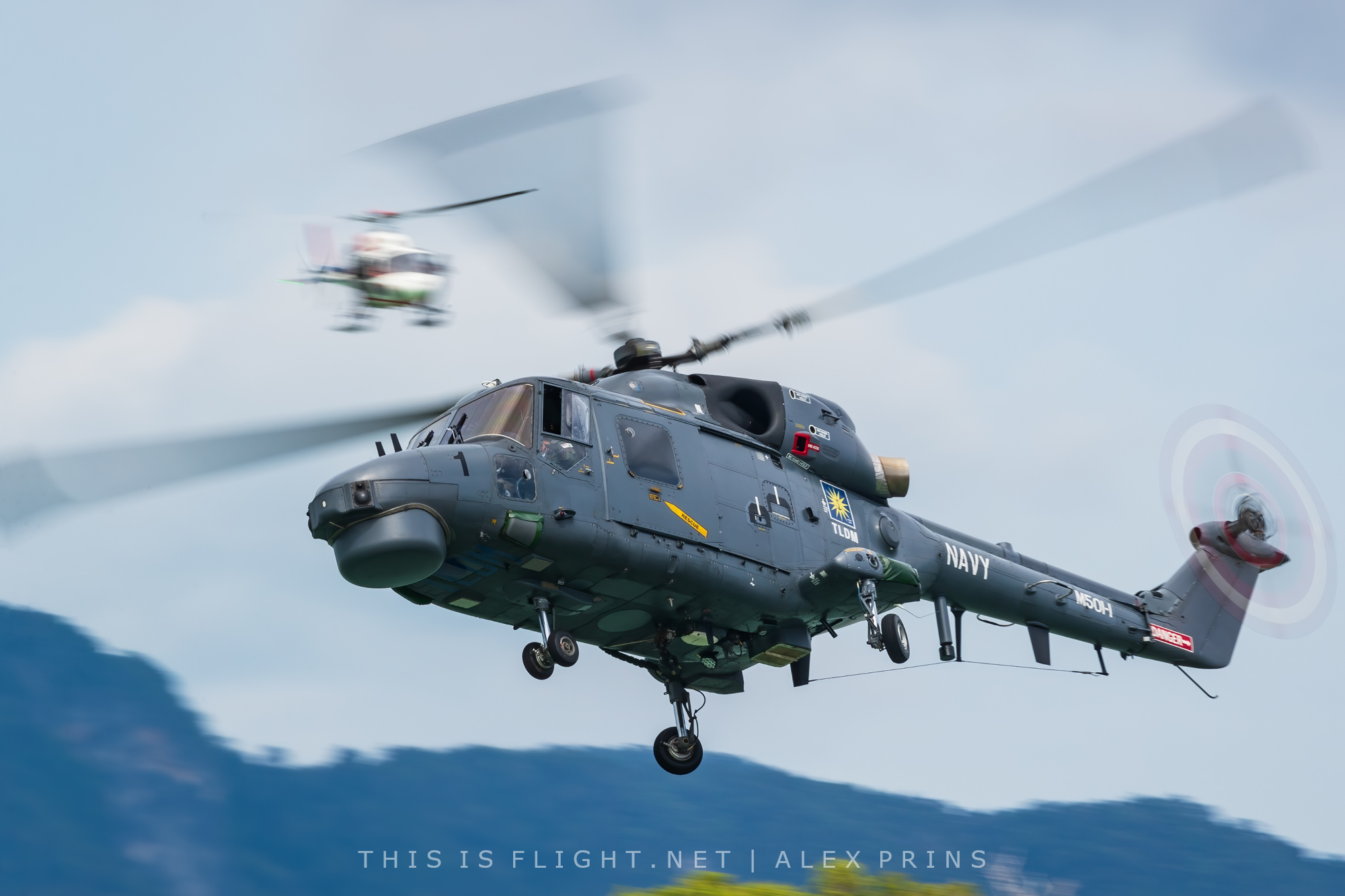
First on the scene, a Malaysian Navy Fennec located the pirate stronghold, followed by a Police Squirrel which provided armed overwatch. Maritime Enforcement Agency and Navy vessels and helicopters began racing to the scene, with further troops being delivered via fast-roping. Finally, a Super Lynx arrived to deliver special forces troops onto the roof of the pirate compound directly. Once the scenario was over, the approximately 20 vessels lined up and steamed head-on towards the crowd, while the cast of helicopters flew low overhead. This proved to be one of our surprise highlights of the week.

Later maritime displays included a Fire & Rescue AW189 performing a search and rescue demonstration, a Police hostage rescue scenario involving a Squirrel and AW139, a Navy hostage rescue scenario involving a Super Lynx, AW139 and Fennec, and a Maritime Enforcement Agency demonstration which saw an AW139 demonstrate its SAR capabilities and also take part in the capturing of a hijacked vessel. This latter performance was particularly lively, and included pyrotechnics in the water itself.
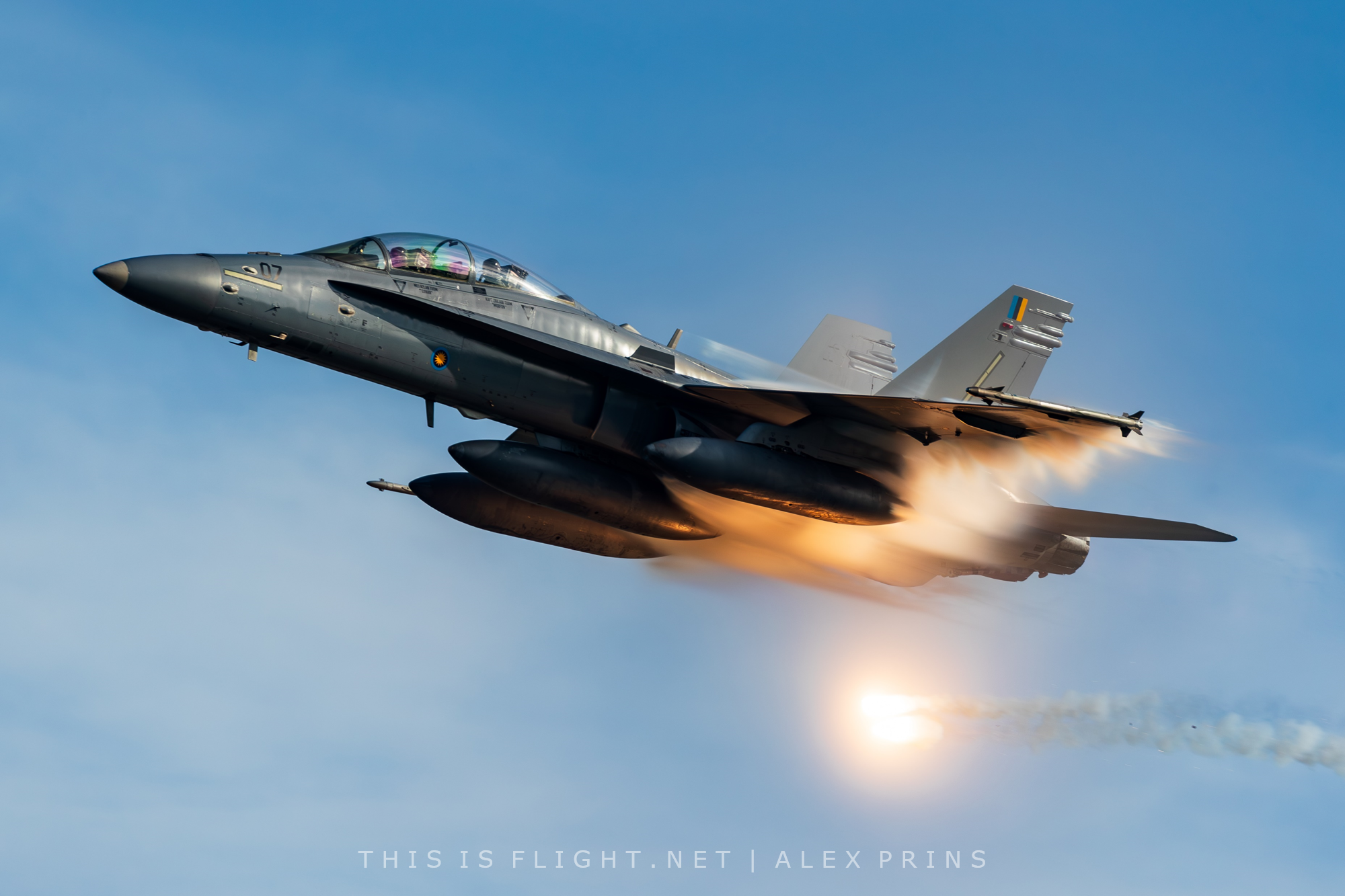
Despite all this superb aviation action, it’s hard not to feel some niggling disappointment about LIMA ’25. The number of flying display participants was slightly below average, and the RMAF seems to have dropped its short-lived tradition of performing multi-aircraft tactical displays during the public days, which had featured in 2019 and 2023. The Opening Gambit was smaller than usual, and the cancellation of Surya Kiran stung more than a little. There had also been well-publicised rumours that the Su-57E had been due to attend – rumours which came to nought. I asked two people connected to the show about this, one of whom was adamant that it was planned and provisions had been made for the jet’s arrival, and another who said the Su-57’s participation was never seriously proposed. Take your pick of which to believe.
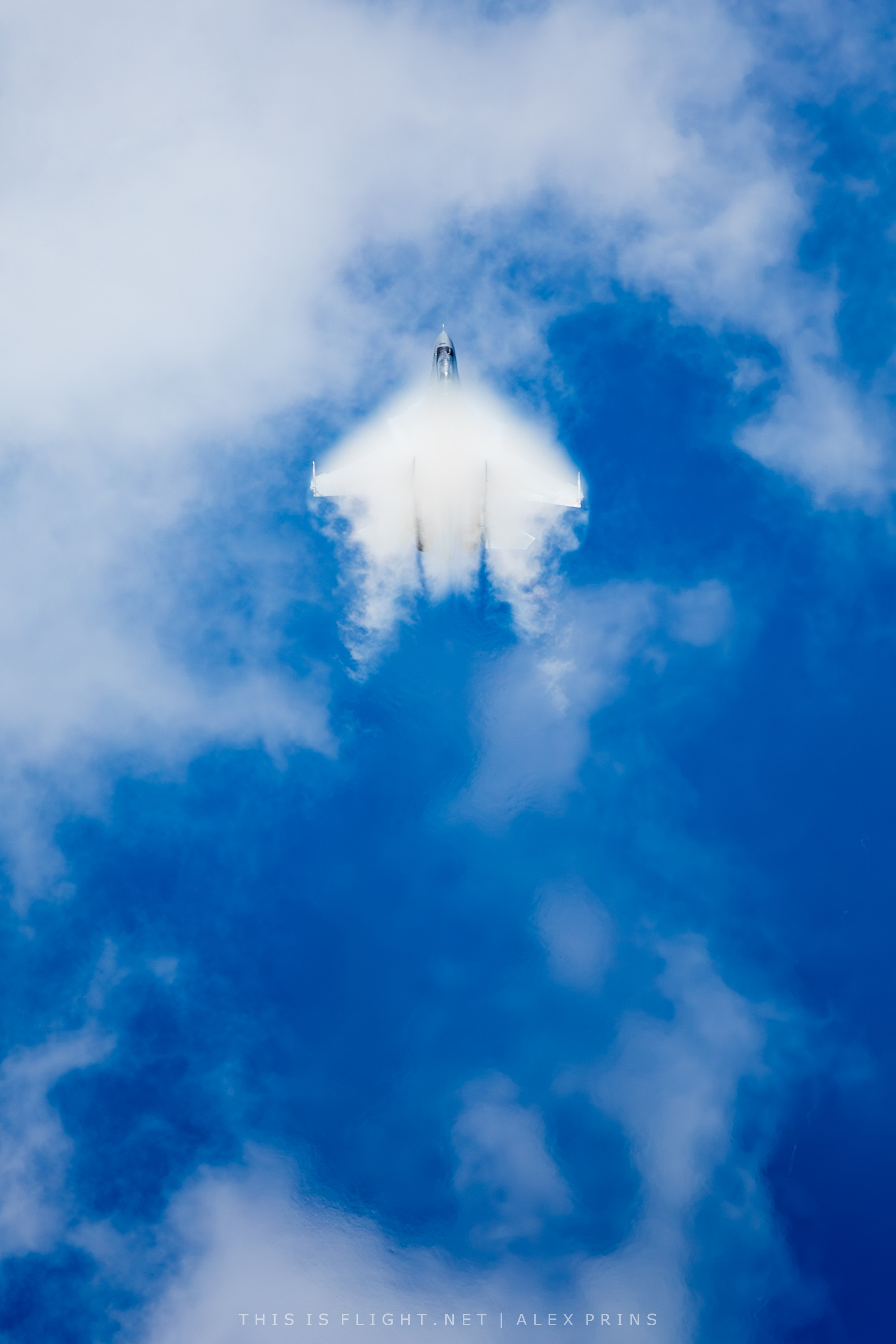
Frankly, one wonders if the organisers could have done better. While at the show, a fellow spotter showed me an internal document, tracking the progress of invitations sent to foreign aerobatic teams. The document appeared to be genuine and has since been shared around on social media; if this document tells the full story, then it appears that certain LIMA regulars were not invited this year, but various no-hopers were (including one team that is taking a well-publicised year off, and isn’t flying any shows at all this year!). It also appears that someone – either the RMAF or the LIMA organisers themselves – was expecting the participation of the USA’s F-35C and F-22A demonstration teams and made provisions for their attendence, despite both teams having publicly committed to other events on the same dates months beforehand.
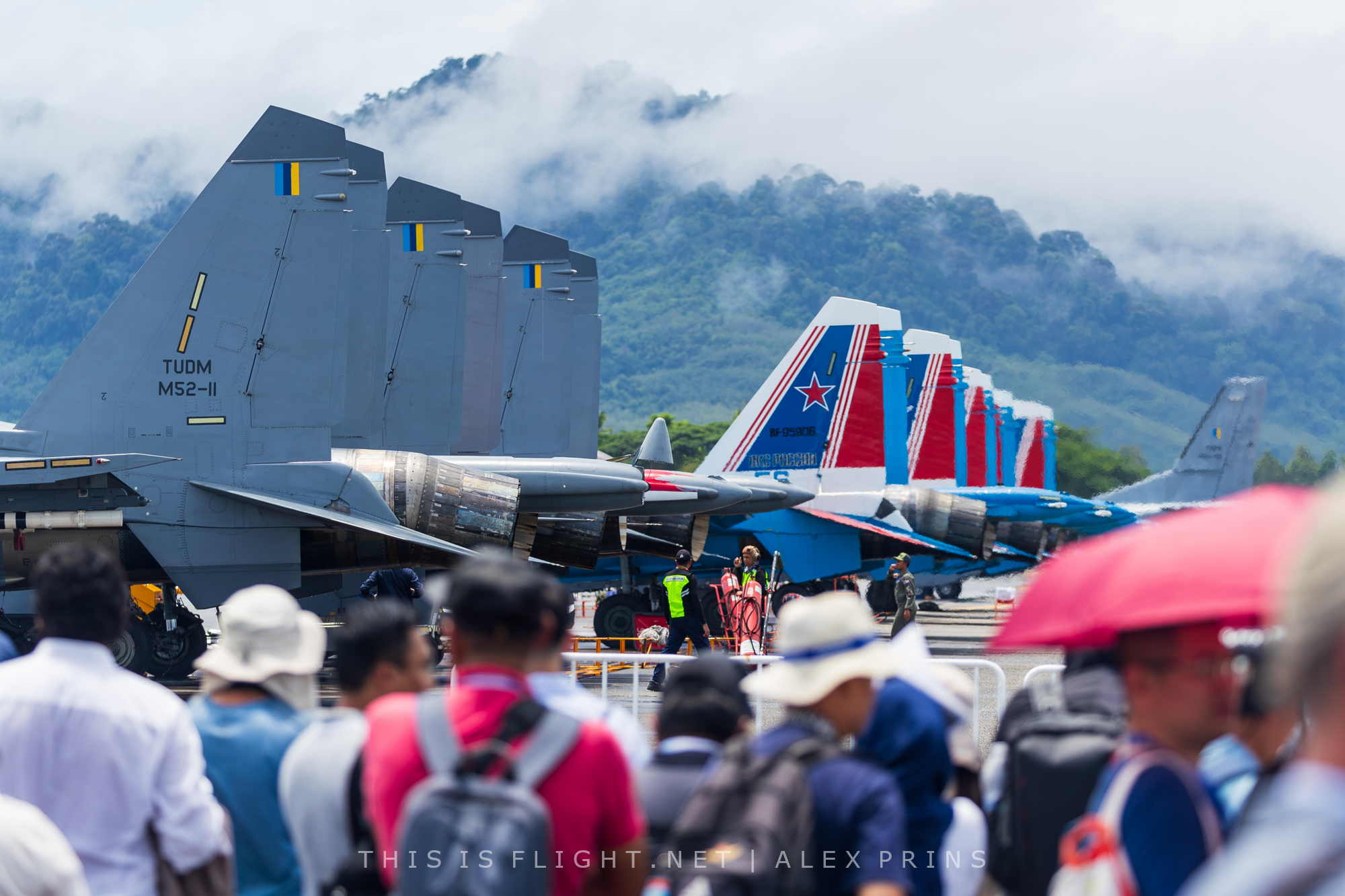
Yet this was, by no means, a wasted trip, despite the small line up. We got more than a week of aviation action, featuring all facets of military airpower and two national aerobatic teams. We saw more thrust vectoring jets than at virtually any other airshow in the world, and the marvellous, absurd, ridiculous Opening Gambit. We got interesting vantage points, photogenic backdrops and weather to suit all desires. We got indescribable sunsets and brilliant food and wonderful beaches. We got, in short, all the ingredients needed for one of the most memorable airshow adventures that anyone could possibly have embarked on this year. If that isn’t worth a trip to Malaysia, then I don’t know what is.